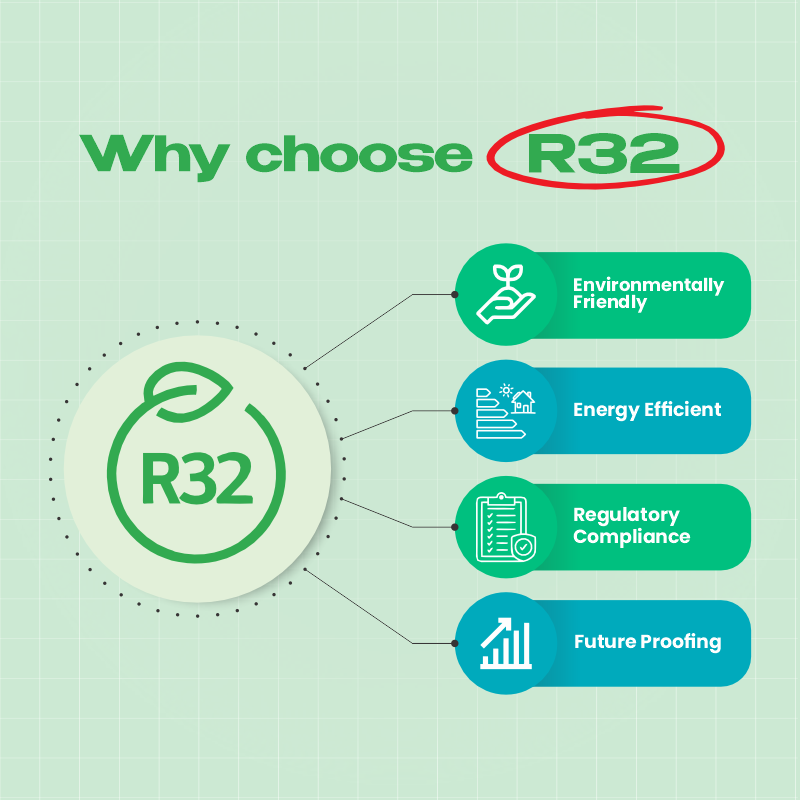As the HVAC industry shifts towards more environmentally friendly refrigerants, R32 has emerged as a promising alternative to traditional options like R410A. With its lower global warming potential (GWP) and improved energy efficiency, R32 is gaining traction across various HVAC product types. In this blog post, we'll provide a comprehensive timeline of R32 adoption across different HVAC product categories, highlighting key dates and developments that industry professionals and consumers need to know.
Transition in Air Conditioners: The adoption of R32 in air conditioning systems has been steadily increasing, driven by its superior environmental credentials and regulatory compliance. Manufacturers have been phasing out R410A models in favor of R32-compatible units. Many leading HVAC brands will exclusively offer R32-based air conditioners, signaling a significant milestone in the industry's transition towards more sustainable refrigerants.
Expansion in Heat Pumps: Heat pumps play a crucial role in both heating and cooling applications, making them a prime target for R32 adoption. Manufacturers are introducing a wide range of R32 heat pump models to meet growing demand for energy-efficient solutions. By 2025 the majority of new heat pump installations are expected to utilize R32 refrigerant, offering homeowners and businesses improved performance and reduced environmental impact.
Integration in Chillers and Commercial Systems: Chillers and commercial HVAC systems are also undergoing a transition towards R32 refrigerant, albeit at a slower pace due to the complexity of these applications. However, advancements in technology and regulatory pressures are driving manufacturers to develop R32-compatible solutions. By 2025, significant progress is expected in the adoption of R32 in chillers and commercial HVAC systems, aligning with sustainability goals and regulatory requirements.
Impact on Refrigeration Equipment: The adoption of R32 is not limited to air conditioning and heating systems but extends to refrigeration equipment as well. Manufacturers of refrigerators, freezers, and other cooling appliances are exploring R32 as a viable alternative to legacy refrigerants. Consumers can expect to see an increasing number of R32-based refrigeration products on the market, offering improved efficiency and reduced environmental impact.
Considerations for Consumers: For consumers, staying informed about the timeline of R32 adoption across different HVAC product types is essential for making informed purchasing decisions. As R32-compatible models become more prevalent, consumers should consider factors such as energy efficiency, environmental impact, and compatibility with existing systems when upgrading or replacing HVAC equipment. By choosing R32-based products, consumers can contribute to a more sustainable future while enjoying the benefits of improved performance and efficiency.
The adoption of R32 across various HVAC product types is a significant milestone in the industry's transition towards more sustainable refrigerants. With specific dates marking key developments in air conditioners, heat pumps, chillers, and refrigeration equipment, stakeholders in the HVAC industry and consumers alike need to stay informed and prepared for the shift. By embracing R32-compatible solutions, the industry can reduce its environmental footprint and pave the way for a more sustainable future in heating, cooling, and refrigeration. If you are looking for an HVAC product already utilizing R32 the Amana J Series 15,000 BRU PTAC is a great place to start.







